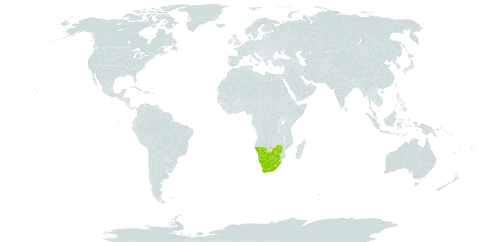Perennial 120-650 mm high; with rhizomes and stolons. Leaf blade 10-50(-80) x 3 mm. Inflorescence 20-70 mm long, narrowly spike-like; spikelets clustered on peduncles much shorter than spikelets. Lowest spikelet in each cluster 3.5-4.8 mm long; upper glume 5-nerved, bulbous-based spines straight or curved, not hooked at the apices; anther 1.8-2.5 mm long.
Perennial, rhizomatous and stoloniferous, up to 0.65 m high. Leaf blades 10-50(-80) mm long, up to 3 mm wide. Spikelets (lowest in each cluster) 3.5-4.8 mm long. Inflorescence narrowly spike-like; spikelets clustered on peduncles that are much shorter than spikelets; glume hairs curved, not hooked at tip; anthers 1.8-2.5 mm long.
Perennial; up to 0.65 m high; rhizomatous; stoloniferous. Leaf blades up to 10-50(-80) x 3 mm. Flowers: inflorescence narrowly spike-like; spikelets clustered on peduncles that are much shorter than spikelets; lowest in each cluster 3.5-4.8 mm long; glume spines curved; not hooked at apex; anthers 1.8-2.5 mm long.
Spikelets 4–4.2 mm long; superior glume prominently 5-nerved, the nerves bearing long straight or curved, but not hooked, bulbous-based prickles, hispidulous between the nerves; anthers 1.6–2.4 mm long.
Inflorescence 2.5–7 cm long, compactly cylindrical, congested; racemelets comprising up to 5 fertile and 1 sterile spikelets borne on a short peduncle.
Stoloniferous perennial up to 50 cm tall; leaf laminas 2–4.5 cm × 1.5–3 mm, flat, glaucous, the margins thickened, whitish, thinly barbellate.
